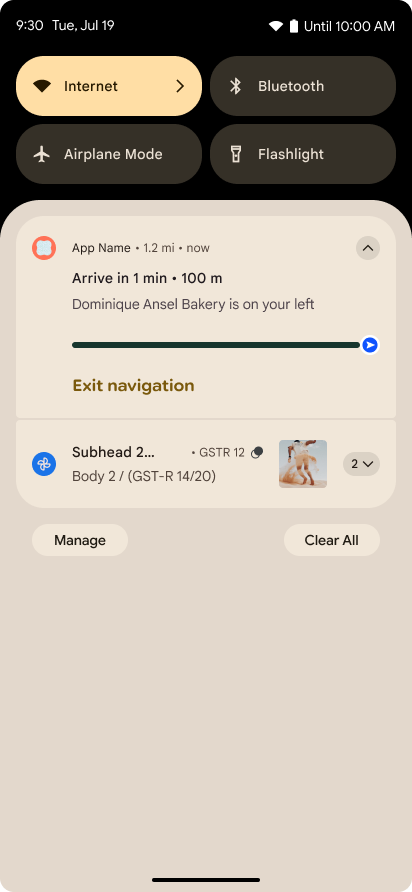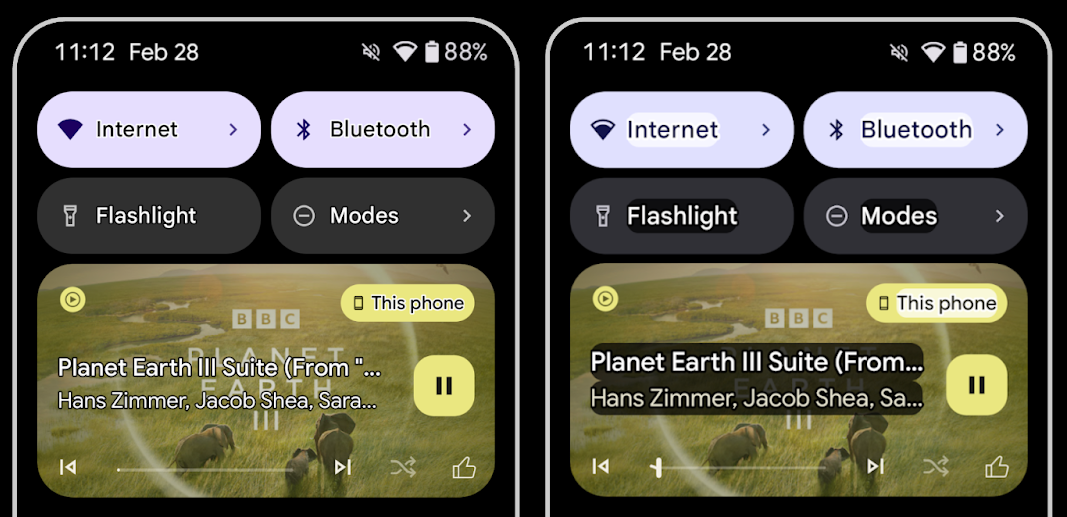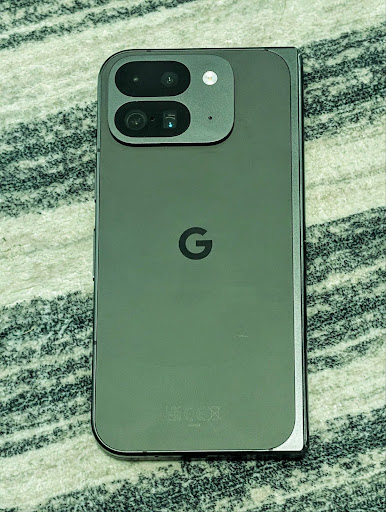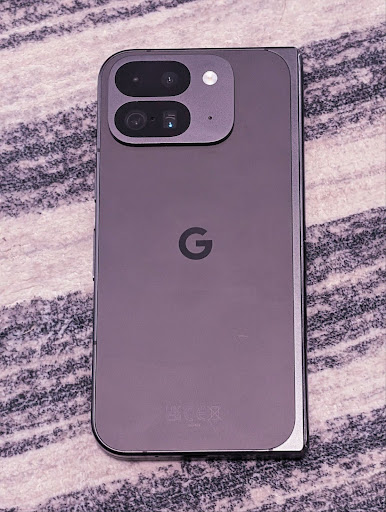Android 16 memperkenalkan fitur dan API baru yang hebat bagi para developer. Bagian berikut merangkum fitur-fitur ini untuk membantu Anda memulai API terkait.
Untuk melihat daftar mendetail tentang API yang baru, diubah, dan dihapus, baca laporan perbedaan API. Untuk mengetahui detail tentang API baru, buka referensi API Android — API baru ditandai agar lebih mudah dilihat.Anda juga harus meninjau area yang mungkin terpengaruh oleh perubahan platform. Untuk mengetahui informasi selengkapnya, lihat halaman berikut:
- Perubahan perilaku yang memengaruhi aplikasi saat menargetkan Android 16
- Perubahan perilaku yang memengaruhi semua aplikasi, terlepas dari
targetSdkVersion.
Fungsi inti
Android menyertakan API baru yang memperluas kemampuan inti sistem Android.
Dua rilis Android API pada tahun 2025
- This preview is for the next major release of Android with a planned launch in Q2 of 2025. This release is similar to all of our API releases in the past, where we can have planned behavior changes that are often tied to a targetSdkVersion.
- We're planning the major release a quarter earlier (Q2 rather than Q3 in prior years) to better align with the schedule of device launches across our ecosystem, so more devices can get the major release of Android sooner. With the major release coming in Q2, you'll need to do your annual compatibility testing a few months earlier than in previous years to make sure your apps are ready.
- We plan to have another release in Q4 of 2025 which also will include new developer APIs. The Q2 major release will be the only release in 2025 to include planned behavior changes that could affect apps.
In addition to new developer APIs, the Q4 minor release will pick up feature updates, optimizations, and bug fixes; it will not include any app-impacting behavior changes.

We'll continue to have quarterly Android releases. The Q1 and Q3 updates in-between the API releases will provide incremental updates to help ensure continuous quality. We're actively working with our device partners to bring the Q2 release to as many devices as possible.
Using new APIs with major and minor releases
Guarding a code block with a check for API level is done today using
the SDK_INT constant with
VERSION_CODES. This will continue
to be supported for major Android releases.
if (SDK_INT >= VERSION_CODES.BAKLAVA) {
// Use APIs introduced in Android 16
}
The new SDK_INT_FULL
constant can be used for API checks against both major and minor versions with
the new VERSION_CODES_FULL
enumeration.
if (SDK_INT_FULL >= VERSION_CODES_FULL.[MAJOR or MINOR RELEASE]) {
// Use APIs introduced in a major or minor release
}
You can also use the
Build.getMinorSdkVersion()
method to get just the minor SDK version.
val minorSdkVersion = Build.getMinorSdkVersion(VERSION_CODES_FULL.BAKLAVA)
These APIs have not yet been finalized and are subject to change, so please send us feedback if you have any concerns.
Pengalaman pengguna dan UI sistem
Android 16 memberi developer dan pengguna aplikasi kontrol dan fleksibilitas yang lebih besar untuk mengonfigurasi perangkat agar sesuai dengan kebutuhan mereka.
Notifikasi yang berfokus pada progres
Android 16 memperkenalkan notifikasi yang berfokus pada progres untuk membantu pengguna melacak perjalanan awal hingga akhir yang dimulai pengguna dengan lancar.
Notification.ProgressStyle adalah gaya notifikasi
baru yang memungkinkan Anda membuat notifikasi yang berfokus pada progres. Kasus penggunaan utama mencakup
transportasi online, pengiriman, dan navigasi. Dalam class Notification.ProgressStyle, Anda dapat menunjukkan status dan tonggak pencapaian dalam perjalanan pengguna menggunakan
titik dan segmen.
To learn more, see the Progress-centric notifications documentation page.


Pembaruan kembali prediktif
Android 16 adds new APIs to help you enable predictive back system animations in
gesture navigation such as the back-to-home animation. Registering the
onBackInvokedCallback with the new
PRIORITY_SYSTEM_NAVIGATION_OBSERVER allows your app to
receive the regular onBackInvoked call whenever the
system handles a back navigation without impacting the normal back navigation
flow.
Android 16 additionally adds the
finishAndRemoveTaskCallback() and
moveTaskToBackCallback. By registering these callbacks
with the OnBackInvokedDispatcher, the system can trigger
specific behaviors and play corresponding ahead-of-time animations when the back
gesture is invoked.
Haptik yang lebih kaya
Android has exposed control over the haptic actuator ever since its inception.
Android 11 added support for more complex haptic effects that more advanced
actuators could support through
VibrationEffect.Compositions of device-defined semantic
primitives.
Android 16 adds haptic APIs that let apps define the amplitude and frequency curves of a haptic effect while abstracting away differences between device capabilities.
Alat dan produktivitas developer
Meskipun sebagian besar upaya kami untuk meningkatkan produktivitas Anda berfokus pada alat seperti Android Studio, Jetpack Compose, dan library Android Jetpack, kami selalu mencari cara di platform untuk membantu Anda mewujudkan visi Anda.
Penanganan konten untuk wallpaper animasi
Di Android 16, framework wallpaper animasi mendapatkan API konten baru untuk
mengatasi tantangan wallpaper dinamis yang didorong pengguna. Saat ini, wallpaper
live yang menggabungkan konten yang disediakan pengguna memerlukan penerapan
khusus layanan yang kompleks. Android 16 memperkenalkan
WallpaperDescription dan
WallpaperInstance. WallpaperDescription memungkinkan Anda
mengidentifikasi instance wallpaper animasi yang berbeda dari layanan yang sama. Misalnya, wallpaper yang memiliki instance di layar utama dan layar
kunci mungkin memiliki konten unik di kedua tempat tersebut. Pemilih wallpaper dan
WallpaperManager menggunakan metadata ini untuk menampilkan
wallpaper dengan lebih baik kepada pengguna, sehingga menyederhanakan proses bagi Anda untuk membuat pengalaman wallpaper hidup yang beragam dan
dipersonalisasi.
Performa dan baterai
Android 16 memperkenalkan API yang membantu mengumpulkan insight tentang aplikasi Anda.
Pembuatan profil yang dipicu sistem
ProfilingManager
ditambahkan di Android 15, yang memberi aplikasi kemampuan untuk
meminta pengumpulan data pembuatan profil menggunakan Perfetto di perangkat publik di lapangan.
Namun, karena pembuatan profil ini harus dimulai dari aplikasi, alur penting seperti
startup atau ANR akan sulit atau tidak dapat direkam oleh aplikasi.
Untuk membantu hal ini, Android 16 memperkenalkan pembuatan profil yang dipicu sistem ke
ProfilingManager. Aplikasi dapat mendaftarkan minat untuk menerima rekaman aktivitas untuk pemicu
tertentu seperti cold start reportFullyDrawn
atau ANR, lalu sistem akan memulai dan menghentikan rekaman aktivitas atas nama aplikasi. Setelah
pelacakan selesai, hasilnya akan dikirim ke direktori data aplikasi.
Memulai komponen di ApplicationStartInfo
ApplicationStartInfo was added in Android
15, allowing an app to see reasons
for process start, start type, start times, throttling, and other useful
diagnostic data. Android 16 adds
getStartComponent()
to distinguish what component type triggered the start, which can be helpful for
optimizing the startup flow of your app.
Introspeksi tugas yang lebih baik
JobScheduler#getPendingJobReason() API menampilkan alasan mengapa tugas
mungkin tertunda. Namun, tugas mungkin tertunda karena beberapa alasan.
Di Android 16, kami memperkenalkan API
JobScheduler#getPendingJobReasons(int jobId) baru, yang menampilkan beberapa
alasan mengapa tugas tertunda, karena batasan eksplisit yang ditetapkan oleh
developer dan batasan implisit yang ditetapkan oleh sistem.
Kami juga memperkenalkan
JobScheduler#getPendingJobReasonsHistory(int jobId), yang menampilkan daftar
perubahan batasan terbaru.
Sebaiknya gunakan API untuk membantu Anda men-debug alasan tugas Anda mungkin tidak dieksekusi, terutama jika Anda melihat penurunan rasio keberhasilan tugas tertentu atau memiliki bug di sekitar latensi penyelesaian tugas tertentu. Misalnya, pembaruan widget di latar belakang gagal terjadi atau tugas pengambilan data gagal dipanggil sebelum aplikasi dimulai.
Hal ini juga dapat membantu Anda lebih memahami apakah tugas tertentu tidak selesai karena batasan yang ditentukan sistem dibandingkan batasan yang ditetapkan secara eksplisit.
Kecepatan refresh adaptif
Adaptive refresh rate (ARR), introduced in Android 15, enables the display refresh rate on supported hardware to adapt to the content frame rate using discrete VSync steps. This reduces power consumption while eliminating the need for potentially jank-inducing mode-switching.
Android 16 introduces hasArrSupport() and
getSuggestedFrameRate(int) while restoring
getSupportedRefreshRates() to make it easier for your apps to take
advantage of ARR. RecyclerView
1.4 internally supports ARR when it is settling from a fling or
smooth scroll, and we're continuing our work to add ARR
support into more Jetpack libraries. This frame rate article covers
many of the APIs you can use to set the frame rate so that your app can directly
use ARR.
Headroom API di ADPF
SystemHealthManager memperkenalkan
getCpuHeadroom dan
getGpuHeadroom API, yang dirancang untuk menyediakan game dan
aplikasi yang intensif resource dengan estimasi resource CPU dan GPU yang tersedia. Metode
ini menawarkan cara bagi Anda untuk mengukur cara terbaik aplikasi atau game Anda meningkatkan
kesehatan sistem, terutama jika digunakan bersama dengan Android Dynamic
Performance Framework (ADPF) API lainnya yang mendeteksi throttling
termal.
Dengan menggunakan CpuHeadroomParams dan
GpuHeadroomParams di perangkat yang didukung, Anda dapat
menyesuaikan periode waktu yang digunakan untuk menghitung headroom dan memilih antara
ketersediaan resource rata-rata atau minimum. Hal ini dapat membantu Anda mengurangi penggunaan resource CPU atau
GPU dengan semestinya, sehingga menghasilkan pengalaman pengguna yang lebih baik dan meningkatkan
masa pakai baterai.
Aksesibilitas
Android 16 menambahkan API dan fitur aksesibilitas baru yang dapat membantu Anda menghadirkan aplikasi ke setiap pengguna.
API aksesibilitas yang ditingkatkan
Android 16 adds additional APIs to enhance UI semantics that help improve consistency for users that rely on accessibility services, such as TalkBack.
Outline text for maximum text contrast
Users with low vision often have reduced contrast sensitivity, making it challenging to distinguish objects from their backgrounds. To help these users, Android 16 introduces outline text, replacing high contrast text, which draws a larger contrasting area around text to greatly improve legibility.
Android 16 contains new AccessibilityManager APIs to let
your apps check or register a listener to
see if this mode is enabled. This is primarily for UI Toolkits like Compose to
offer a similar visual experience. If you maintain a UI Toolkit library or your
app performs custom text rendering that bypasses the
android.text.Layout class then you can use this to know
when outline text is enabled.

Duration added to TtsSpan
Android 16 extends TtsSpan with a TYPE_DURATION,
consisting of ARG_HOURS, ARG_MINUTES,
and ARG_SECONDS. This lets you directly annotate time
duration, ensuring accurate and consistent text-to-speech output with services
like TalkBack.
Support elements with multiple labels
Android currently allows UI elements to derive their accessibility label from
another, and now offers the ability for multiple labels to be associated, a
common scenario in web content. By introducing a list-based API within
AccessibilityNodeInfo, Android can directly support these
multi-label relationships. As part of this change, we've deprecated
AccessibilityNodeInfo#setLabeledBy and
#getLabeledBy in favor of
#addLabeledBy, #removeLabeledBy, and
#getLabeledByList.
Improved support for expandable elements
Android 16 adds accessibility APIs that allow you to convey the expanded or
collapsed state of interactive elements, such as menus and expandable lists. By
setting the expanded state using setExpandedState and
dispatching TYPE_WINDOW_CONTENT_CHANGED AccessibilityEvents
with a CONTENT_CHANGE_TYPE_EXPANDED content change type,
you can ensure that screen readers like TalkBack announce
state changes, providing a more intuitive and inclusive user experience.
Indeterminate ProgressBars
Android 16 adds RANGE_TYPE_INDETERMINATE, giving a way for
you to expose RangeInfo for both determinate and
indeterminate ProgressBar widgets, allowing services like
TalkBack to more consistently provide feedback for progress
indicators.
Tri-state CheckBox
The new AccessibilityNodeInfo
getChecked and setChecked(int)
methods in Android 16 now support a "partially checked" state in addition to
"checked" and "unchecked." This replaces the deprecated boolean
isChecked and setChecked(boolean).
Supplemental descriptions
When an accessibility service describes a ViewGroup, it
combines content labels from its child views. If you provide a
contentDescription for the ViewGroup, accessibility services assume you are
also overriding the description of non-focusable child views. This can be
problematic if you want to label things like a drop-down (for example, "Font
Family") while preserving the current selection for accessibility (for example,
"Roboto"). Android 16 adds setSupplementalDescription so
you can provide text that provides information about a ViewGroup without
overriding information from its children.
Required form fields
Android 16 adds setFieldRequired to
AccessibilityNodeInfo so apps can tell an accessibility
service that input to a form field is required. This is an important scenario
for users filling out many types of forms, even things as simple as a required
terms and conditions checkbox, helping users to consistently identify and
quickly navigate between required fields.
Ponsel sebagai input mikrofon untuk panggilan suara dengan alat bantu dengar LEA
Android 16 adds the capability for users of LE Audio hearing aids to switch between the built-in microphones on the hearing aids and the microphone on their phone for voice calls. This can be helpful in noisy environments or other situations where the hearing aid's microphones might not perform well.
Kontrol volume ruangan untuk alat bantu dengar LEA
Android 16 menambahkan kemampuan bagi pengguna alat bantu dengar LE Audio untuk menyesuaikan volume suara sekitar yang ditangkap oleh mikrofon alat bantu dengar. Hal ini dapat membantu dalam situasi saat suara bising di latar belakang terlalu keras atau terlalu pelan.
Kamera
Android 16 meningkatkan dukungan untuk pengguna kamera profesional, yang memungkinkan eksposur otomatis
hibrida beserta penyesuaian tint dan suhu warna yang akurat. Indikator
mode malam baru membantu aplikasi Anda mengetahui kapan harus beralih ke dan dari sesi kamera
mode malam. Tindakan Intent baru mempermudah pengambilan foto gerakan,
dan kami terus meningkatkan kualitas gambar UltraHDR dengan dukungan untuk encoding HEIC
dan parameter baru dari standar draf ISO 21496-1.
Eksposur otomatis campuran
Android 16 adds new hybrid auto-exposure modes to Camera2, allowing you to manually control specific aspects of exposure while letting the auto-exposure (AE) algorithm handle the rest. You can control ISO + AE, and exposure time + AE, providing greater flexibility compared to the current approach where you either have full manual control or rely entirely on auto-exposure.
fun setISOPriority() {
// ... (Your existing code before the snippet) ...
val availablePriorityModes = mStaticInfo.characteristics.get(
CameraCharacteristics.CONTROL_AE_AVAILABLE_PRIORITY_MODES
)
// ... (Your existing code between the snippets) ...
// Turn on AE mode to set priority mode
reqBuilder.set(
CaptureRequest.CONTROL_AE_MODE,
CameraMetadata.CONTROL_AE_MODE_ON
)
reqBuilder.set(
CaptureRequest.CONTROL_AE_PRIORITY_MODE,
CameraMetadata.CONTROL_AE_PRIORITY_MODE_SENSOR_SENSITIVITY_PRIORITY
)
reqBuilder.set(
CaptureRequest.SENSOR_SENSITIVITY,
TEST_SENSITIVITY_VALUE
)
val request: CaptureRequest = reqBuilder.build()
// ... (Your existing code after the snippet) ...
}
Penyesuaian tint dan suhu warna yang akurat
Android 16 adds camera support for fine color temperature and tint adjustments
to better support professional video recording applications. In previous Android
versions, you could control white balance settings through
CONTROL_AWB_MODE, which contains options limited to a
preset list, such as Incandescent,
Cloudy, and Twilight. The
COLOR_CORRECTION_MODE_CCT enables the use of
COLOR_CORRECTION_COLOR_TEMPERATURE and
COLOR_CORRECTION_COLOR_TINT for precise adjustments of
white balance based on the correlated color temperature.
fun setCCT() {
// ... (Your existing code before this point) ...
val colorTemperatureRange: Range<Int> =
mStaticInfo.characteristics[CameraCharacteristics.COLOR_CORRECTION_COLOR_TEMPERATURE_RANGE]
// Set to manual mode to enable CCT mode
reqBuilder[CaptureRequest.CONTROL_AWB_MODE] = CameraMetadata.CONTROL_AWB_MODE_OFF
reqBuilder[CaptureRequest.COLOR_CORRECTION_MODE] = CameraMetadata.COLOR_CORRECTION_MODE_CCT
reqBuilder[CaptureRequest.COLOR_CORRECTION_COLOR_TEMPERATURE] = 5000
reqBuilder[CaptureRequest.COLOR_CORRECTION_COLOR_TINT] = 30
val request: CaptureRequest = reqBuilder.build()
// ... (Your existing code after this point) ...
}
The following examples show how a photo would look after applying different color temperature and tint adjustments:





Deteksi scene mode malam kamera
Untuk membantu aplikasi Anda mengetahui kapan harus beralih ke dan dari sesi kamera mode malam,
Android 16 menambahkan EXTENSION_NIGHT_MODE_INDICATOR. Jika
didukung, fitur ini tersedia di CaptureResult dalam
Camera2.
Ini adalah API yang kami sebutkan secara singkat sebagai segera hadir dalam postingan blog Cara Instagram memungkinkan pengguna mengambil foto cahaya redup yang menakjubkan. Postingan tersebut adalah panduan praktis tentang cara menerapkan mode malam bersama dengan studi kasus yang mengaitkan foto mode malam dalam aplikasi berkualitas lebih tinggi dengan peningkatan jumlah foto yang dibagikan dari kamera dalam aplikasi.
Tindakan intent pengambilan foto gerakan
Android 16 adds standard Intent actions —
ACTION_MOTION_PHOTO_CAPTURE, and
ACTION_MOTION_PHOTO_CAPTURE_SECURE — which request that
the camera application capture a motion photo and return
it.
You must either pass an extra EXTRA_OUTPUT to control
where the image will be written, or a Uri through
Intent.setClipData(ClipData). If you don't set a
ClipData, it will be copied there for you when calling
Context.startActivity(Intent).
Peningkatan kualitas gambar UltraHDR

Android 16 merupakan lanjutan upaya kami untuk menghadirkan kualitas gambar yang memukau dengan gambar
UltraHDR. Versi ini menambahkan dukungan untuk gambar UltraHDR dalam format file
HEIC. Gambar ini akan mendapatkan jenis ImageFormat
HEIC_ULTRAHDR dan akan berisi peta gain tersemat yang mirip
dengan format JPEG UltraHDR yang ada. Kami juga sedang mengerjakan dukungan AVIF untuk UltraHDR, jadi nantikan kabar terbarunya.
Selain itu, Android 16 menerapkan parameter tambahan di UltraHDR dari standar draf ISO 21496-1, termasuk kemampuan untuk mendapatkan dan menetapkan ruang warna tempat matematika gainmap harus diterapkan, serta dukungan untuk gambar dasar yang dienkode HDR dengan gainmap SDR.
Grafik
Android 16 menyertakan peningkatan grafis terbaru, seperti efek grafis kustom dengan AGSL.
Efek grafis kustom dengan AGSL
Android 16 adds RuntimeColorFilter and
RuntimeXfermode, allowing you to author complex effects like
Threshold, Sepia, and Hue Saturation and apply them to draw calls. Since Android
13, you've been able to use AGSL to create custom
RuntimeShaders that extend Shader. The new API
mirrors this, adding an AGSL-powered RuntimeColorFilter that
extends ColorFilter, and a Xfermode effect that
lets you implement AGSL-based custom compositing and blending between source and
destination pixels.
private val thresholdEffectString = """
uniform half threshold;
half4 main(half4 c) {
half luminosity = dot(c.rgb, half3(0.2126, 0.7152, 0.0722));
half bw = step(threshold, luminosity);
return bw.xxx1 * c.a;
}"""
fun setCustomColorFilter(paint: Paint) {
val filter = RuntimeColorFilter(thresholdEffectString)
filter.setFloatUniform(0.5);
paint.colorFilter = filter
}
Konektivitas
Android 16 mengupdate platform untuk memberi aplikasi Anda akses ke kemajuan terbaru dalam teknologi komunikasi dan nirkabel.
Pengukuran jarak dengan keamanan yang ditingkatkan
Android 16 adds support for robust security features in Wi-Fi location on supported devices with Wi-Fi 6's 802.11az, allowing apps to combine the higher accuracy, greater scalability, and dynamic scheduling of the protocol with security enhancements including AES-256-based encryption and protection against MITM attacks. This allows it to be used more safely in proximity use cases, such as unlocking a laptop or a vehicle door. 802.11az is integrated with the Wi-Fi 6 standard, leveraging its infrastructure and capabilities for wider adoption and easier deployment.
API rentang umum
Android 16 includes the new RangingManager, which provides
ways to determine the distance and angle on supported hardware between the local
device and a remote device. RangingManager supports the usage of a variety of
ranging technologies such as BLE channel sounding, BLE RSSI-based ranging, Ultra
Wideband, and Wi-Fi round trip time.
Media
Android 16 menyertakan berbagai fitur yang meningkatkan pengalaman media.
Peningkatan pemilih foto
Pemilih foto menyediakan cara bawaan yang aman bagi pengguna untuk memberikan akses aplikasi Anda ke gambar dan video yang dipilih dari penyimpanan lokal dan cloud, bukan seluruh koleksi media mereka. Dengan menggunakan kombinasi Komponen Sistem Modular melalui Update Sistem Google dan layanan Google Play, fitur ini didukung kembali ke Android 4.4 (API level 19). Integrasi hanya memerlukan beberapa baris kode dengan library Android Jetpack terkait.
Android 16 menyertakan peningkatan berikut pada pemilih foto:
- Alat pilih foto tersemat: API baru yang memungkinkan aplikasi menyertakan alat pilih foto ke dalam hierarki tampilannya. Hal ini memungkinkannya merasa seperti bagian aplikasi yang lebih terintegrasi sekaligus masih memanfaatkan isolasi proses yang memungkinkan pengguna memilih media tanpa memerlukan izin yang terlalu luas. Untuk memaksimalkan kompatibilitas di seluruh versi platform dan menyederhanakan integrasi, sebaiknya gunakan library Android Jetpack mendatang jika Anda ingin mengintegrasikan alat pilih foto tersemat.
- Cloud Search di pemilih foto: API baru yang memungkinkan penelusuran dari penyedia media cloud untuk pemilih foto Android. Fungsi penelusuran di pemilih foto akan segera hadir.
Video Profesional Lanjutan
Android 16 memperkenalkan dukungan untuk codec Advanced Professional Video (APV) yang dirancang untuk digunakan dalam proses perekaman dan pascaproduksi video berkualitas tinggi tingkat profesional.
Standar codec APV memiliki fitur berikut:
- Kualitas video yang tidak mengalami kompresi secara persepsi (hampir sama dengan kualitas video mentah)
- Kompleksitas rendah dan coding intra-frame-only throughput tinggi (tanpa prediksi domain piksel) untuk mendukung alur kerja pengeditan dengan lebih baik
- Dukungan untuk rentang kecepatan bit tinggi hingga beberapa Gbps untuk konten resolusi 2K, 4K, dan 8K, yang diaktifkan oleh skema coding entropi ringan
- Pemasangan ubin frame untuk konten imersif dan untuk mengaktifkan encoding dan decoding paralel
- Dukungan untuk berbagai format sampling kromatik dan kedalaman bit
- Dukungan untuk beberapa decoding dan encoding ulang tanpa penurunan kualitas visual yang parah
- Mendukung video multi-tampilan dan video tambahan seperti kedalaman, alfa, dan pratinjau
- Dukungan untuk HDR10/10+ dan metadata yang ditentukan pengguna
Implementasi referensi APV disediakan melalui project OpenAPV. Android 16 akan menerapkan dukungan untuk Profil APV 422-10 yang menyediakan sampling warna YUV 422 bersama dengan encoding 10-bit dan untuk target kecepatan bit hingga 2 Gbps.
Privasi
Android 16 menyertakan berbagai fitur yang membantu developer aplikasi melindungi privasi pengguna.
Update Health Connect
Health Connect in the developer preview adds ACTIVITY_INTENSITY, a new
data type defined according to World Health Organization guidelines around
moderate and vigorous activity. Each record requires the start time, the end
time and whether the activity intensity is moderate or vigorous.
Health Connect also contains updated APIs supporting health records. This allows apps to read and write medical records in FHIR format with explicit user consent. This API is in an early access program. If you'd like to participate, sign up to be part of our early access program.
Privacy Sandbox di Android
Android 16 menggabungkan versi terbaru Privacy Sandbox di Android, yang merupakan bagian dari upaya berkelanjutan kami untuk mengembangkan teknologi yang memungkinkan pengguna mengetahui bahwa privasi mereka dilindungi. Situs kami memiliki informasi selengkapnya tentang program beta developer Privacy Sandbox di Android untuk membantu Anda memulai. Lihat Runtime SDK yang memungkinkan SDK berjalan di lingkungan runtime khusus yang terpisah dari aplikasi yang ditayangkan, sehingga memberikan pengamanan yang lebih kuat seputar pengumpulan dan pembagian data pengguna.
Keamanan
Android 16 menyertakan fitur yang membantu Anda meningkatkan keamanan aplikasi dan melindungi data aplikasi.
API berbagi kunci
Android 16 adds APIs that support sharing access to
Android Keystore keys with other apps. The new
KeyStoreManager class supports
granting and revoking access to keys
by app uid, and includes an API for apps to access shared
keys.
Faktor bentuk perangkat
Android 16 memberi aplikasi Anda dukungan untuk mendapatkan hasil maksimal dari faktor bentuk Android.
Framework kualitas gambar dan audio standar untuk TV
The new MediaQuality
package in Android 16 exposes
a set of standardized APIs for access to audio and picture profiles and
hardware-related settings. This allows streaming apps to query profiles and
apply them to media dynamically:
- Movies mastered with a wider dynamic range require greater color accuracy to see subtle details in shadows and adjust to ambient light, so a profile that prefers color accuracy over brightness may be appropriate.
- Live sporting events are often mastered with a narrow dynamic range, but are often watched in daylight, so a profile that preferences brightness over color accuracy can give better results.
- Fully interactive content wants minimal processing to reduce latency, and wants higher frame rates, which is why many TV's ship with a game profile.
The API allows apps to switch between profiles and users to enjoy tuning supported TVs to best suit their content.
Internasionalisasi
Android 16 menambahkan fitur dan kemampuan yang melengkapi pengalaman pengguna saat perangkat digunakan dalam bahasa yang berbeda.
Teks vertikal
Android 16 menambahkan dukungan tingkat rendah untuk merender dan mengukur teks secara vertikal guna
memberikan dukungan penulisan vertikal dasar bagi developer library. Hal ini
sangat berguna untuk bahasa seperti Jepang yang biasanya menggunakan sistem
tulisan vertikal. Flag baru,
VERTICAL_TEXT_FLAG,
telah ditambahkan ke class Paint. Saat
tanda ini ditetapkan menggunakan
Paint.setFlags, API
pengukuran teks Paint akan melaporkan progres vertikal, bukan progres
horizontal, dan Canvas akan menggambar teks
secara vertikal.
val text = "「春は、曙。」"
Box(
Modifier.padding(innerPadding).background(Color.White).fillMaxSize().drawWithContent {
drawIntoCanvas { canvas ->
val paint = Paint().apply { textSize = 64.sp.toPx() }
// Draw text vertically
paint.flags = paint.flags or VERTICAL_TEXT_FLAG
val height = paint.measureText(text)
canvas.nativeCanvas.drawText(
text,
0,
text.length,
size.width / 2,
(size.height - height) / 2,
paint
)
}
}
) {}
Penyesuaian sistem pengukuran
Pengguna kini dapat menyesuaikan sistem pengukuran mereka di preferensi regional dalam
Setelan. Preferensi pengguna disertakan sebagai bagian dari kode lokalitas, sehingga Anda dapat
mendaftarkan BroadcastReceiver di
ACTION_LOCALE_CHANGED untuk menangani perubahan konfigurasi lokalitas saat
preferensi regional berubah.
Menggunakan formator dapat membantu mencocokkan pengalaman lokal. Misalnya, "0,5 in" dalam bahasa Inggris (Amerika Serikat), adalah "12,7 mm" untuk pengguna yang telah menyetel ponsel ke bahasa Inggris (Denmark) atau yang menggunakan ponsel dalam bahasa Inggris (Amerika Serikat) dengan sistem metrik sebagai preferensi sistem pengukuran.
Untuk menemukan setelan ini, buka aplikasi Setelan, lalu buka Sistem > Bahasa & wilayah.

